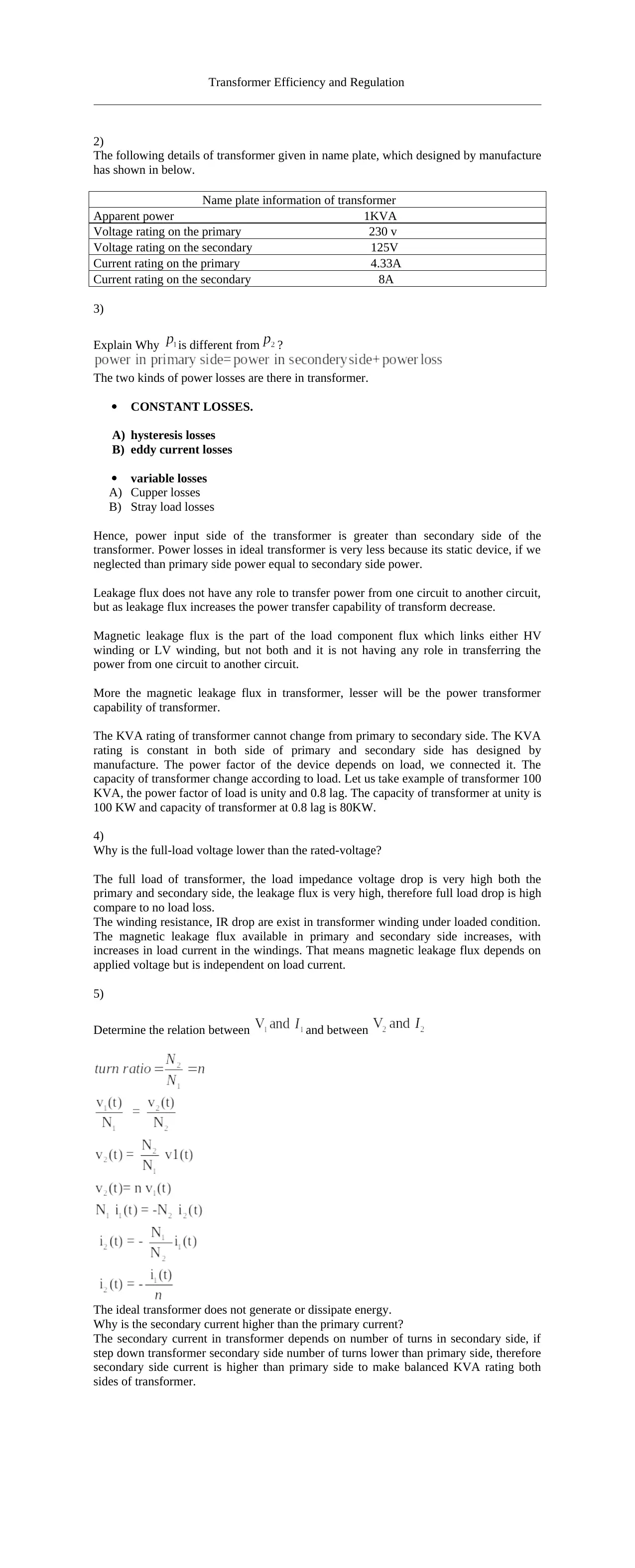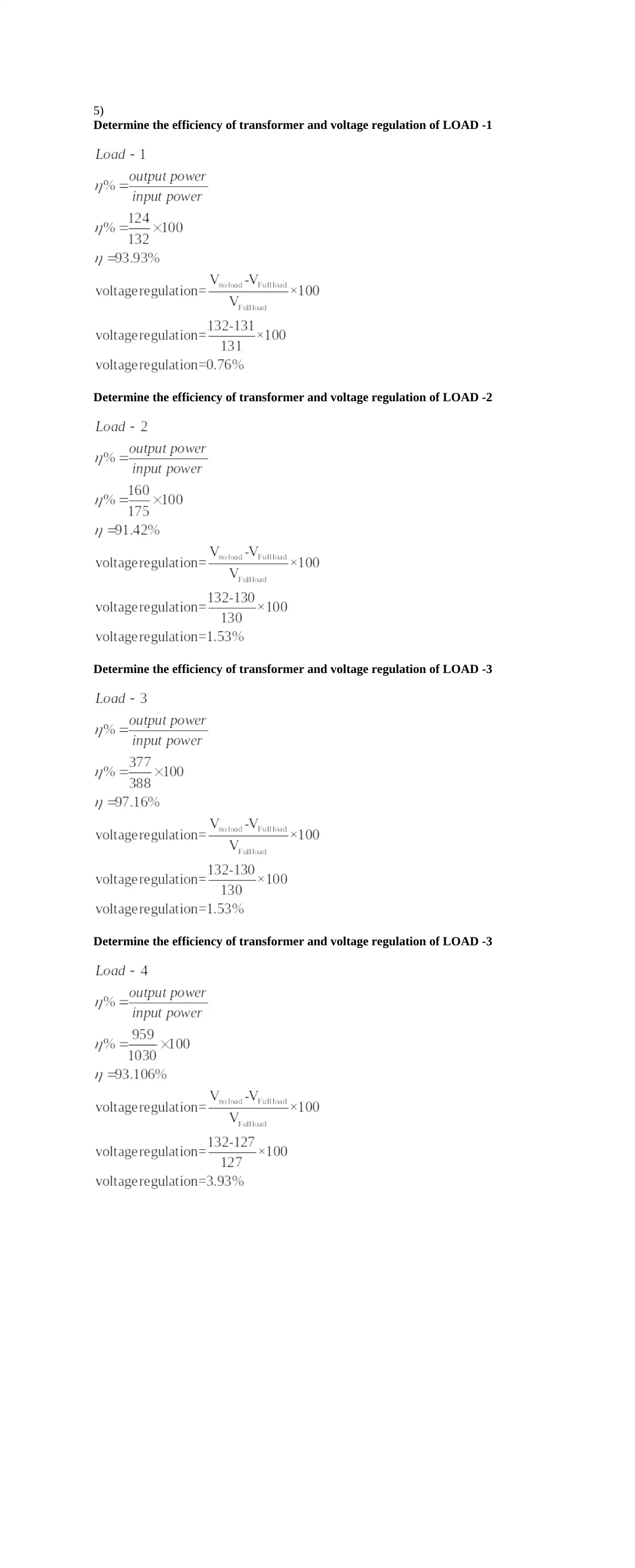Analysis of Transformer Efficiency and Regulation in Electrical Lab
VerifiedAdded on 2023/06/03
|2
|554
|79
Practical Assignment
AI Summary
This assignment delves into the practical aspects of transformer operation, focusing on efficiency and voltage regulation. The solution provides a detailed analysis of a transformer's nameplate information, including voltage and current ratings, and explores the concepts of power losses (constant and variable), leakage flux, and KVA rating. It explains why the secondary current is higher than the primary current in a step-down transformer and addresses the reasons for full-load voltage drops. The assignment also includes safety precautions for the transformer lab, emphasizing the importance of following all safety guidelines. The core of the assignment involves determining the efficiency and voltage regulation of the transformer under various load conditions, offering a comprehensive understanding of transformer performance.
1 out of 2








![[object Object]](/_next/static/media/star-bottom.7253800d.svg)